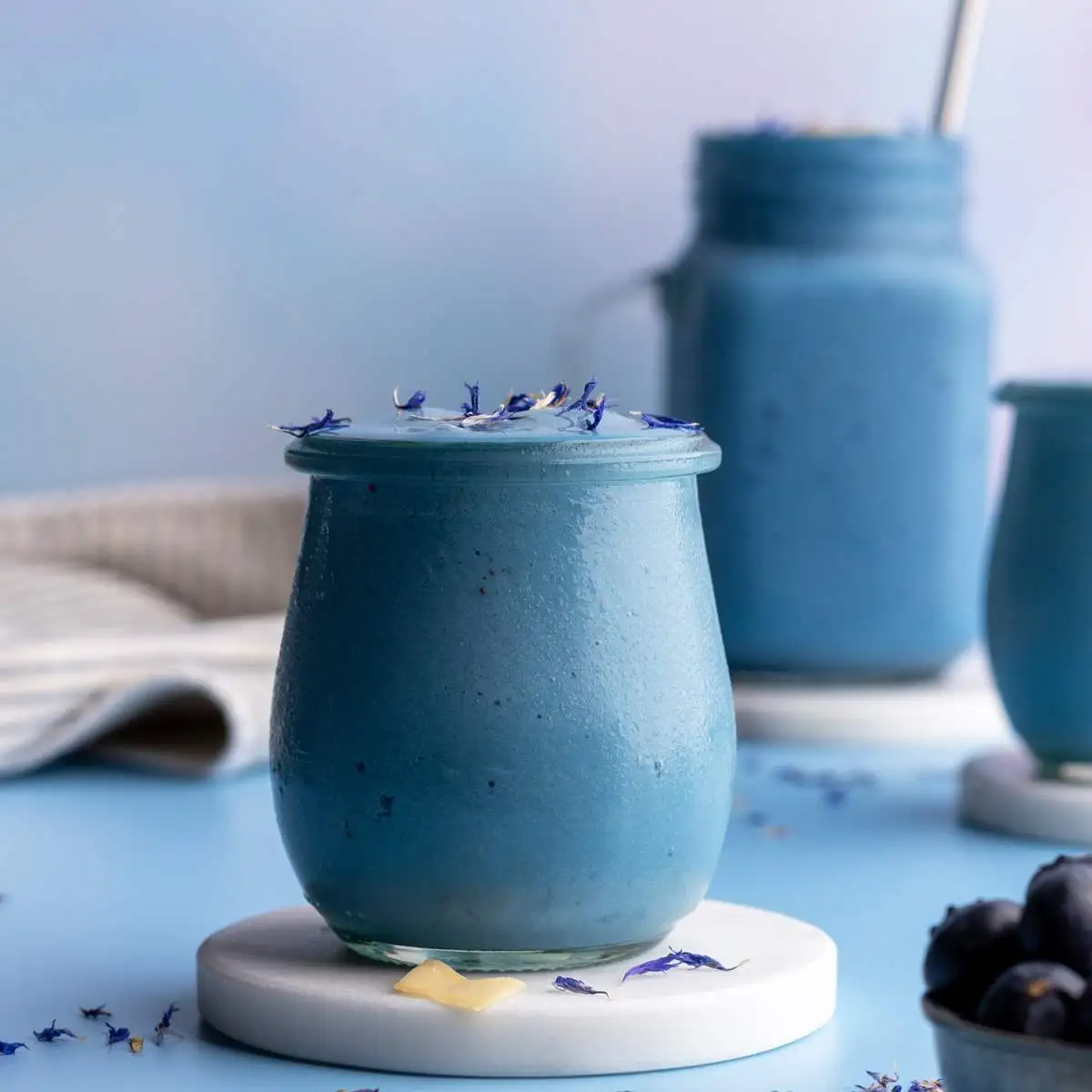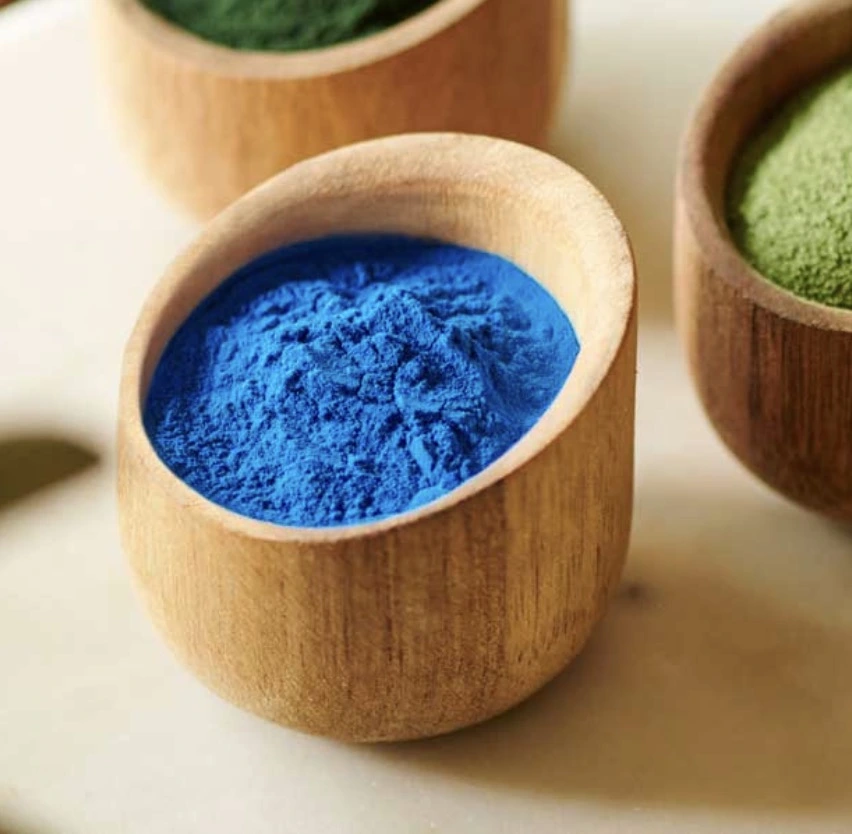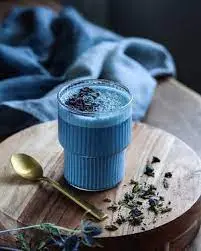Blue spirulina powder vs green spirulina health differences
In the world of superfoods, spirulina has long been hailed as a nutritional powerhouse. However, a new player has entered the arena - blue spirulina powder. As health enthusiasts and nutrition experts debate the merits of blue spirulina vs green spirulina, it's crucial to understand the unique characteristics and potential benefits of each. This comprehensive guide will delve into the health differences between blue spirulina powder and its green counterpart, helping you make an informed decision for your wellness journey.
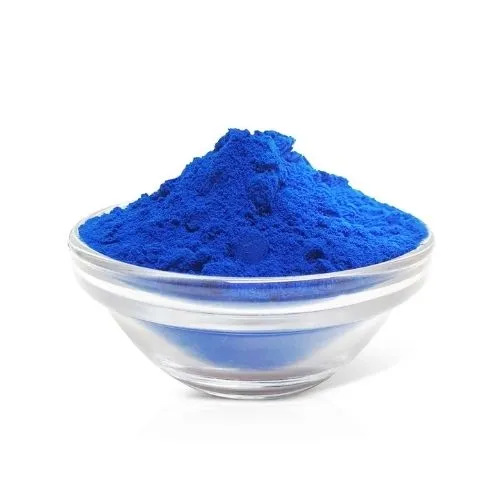
Nutrient Comparison: Blue vs Green Spirulina
Protein Content and Quality
Both blue and green spirulina are renowned for their impressive protein content. Green spirulina typically contains 60-70% protein by dry weight, making it one of the most protein-dense plant foods available. Blue spirulina, derived from the same algae species but processed differently, retains a similar protein profile. However, the extraction process used to isolate the blue pigment (phycocyanin) may slightly reduce the overall protein content in blue spirulina powder.
The protein quality in both forms is exceptional, containing all essential amino acids. This complete protein profile makes spirulina an excellent choice for vegetarians, vegans, and anyone looking to boost their protein intake from plant-based sources.
Vitamin and Mineral Profile
Green spirulina is a nutrient-dense superfood, boasting a wide array of vitamins and minerals. It's particularly rich in:
- Vitamin B12
- Iron
- Calcium
- Magnesium
- Potassium
- Zinc
Blue spirulina powder, while still nutritious, may have a slightly different vitamin and mineral profile due to the extraction process. The focus on isolating phycocyanin means that some of the other nutrients found in whole green spirulina might be present in lower concentrations. However, blue spirulina remains a valuable source of antioxidants and certain minerals.
Antioxidant Properties
The most significant difference between blue and green spirulina lies in their antioxidant profiles. Blue spirulina powder is exceptionally rich in phycocyanin, the pigment responsible for its vibrant blue color. Phycocyanin is a potent antioxidant with anti-inflammatory properties, which has garnered significant interest in the scientific community for its potential health benefits.
Green spirulina, while also containing phycocyanin, offers a broader spectrum of antioxidants, including:
- Chlorophyll
- Beta-carotene
- Zeaxanthin
- Vitamin E
This diverse antioxidant profile contributes to green spirulina's ability to combat oxidative stress and support overall health.

How Blue Spirulina Powder Supports Immune Health?
Phycocyanin: The Blue Powerhouse
Blue spirulina powder's standout feature is its high concentration of phycocyanin. This unique pigment-protein complex has demonstrated impressive immune-boosting properties in various studies. Phycocyanin acts as a powerful antioxidant, helping to neutralize harmful free radicals and reduce oxidative stress in the body.
Research suggests that phycocyanin may enhance the activity of natural killer cells, a crucial component of the immune system responsible for identifying and eliminating potentially harmful cells. By supporting these frontline defenders, blue spirulina powder may contribute to a more robust immune response.
Anti-Inflammatory Effects
Chronic inflammation is increasingly recognized as a root cause of many health issues, including compromised immune function. Blue spirulina powder's high phycocyanin content has been shown to possess potent anti-inflammatory properties. By helping to reduce inflammation throughout the body, blue spirulina may indirectly support immune health and overall wellness.
Studies have indicated that phycocyanin can inhibit the production of pro-inflammatory molecules, potentially alleviating symptoms associated with inflammatory conditions and supporting a balanced immune response.
Detoxification Support
A well-functioning immune system relies on the body's ability to effectively eliminate toxins and waste products. Blue spirulina powder may offer support in this area through its detoxifying properties. The antioxidants in blue spirulina, particularly phycocyanin, have been shown to support liver function and enhance the body's natural detoxification processes.
By aiding in the removal of harmful substances and supporting organ function, blue spirulina powder may help create an optimal environment for immune health to flourish.
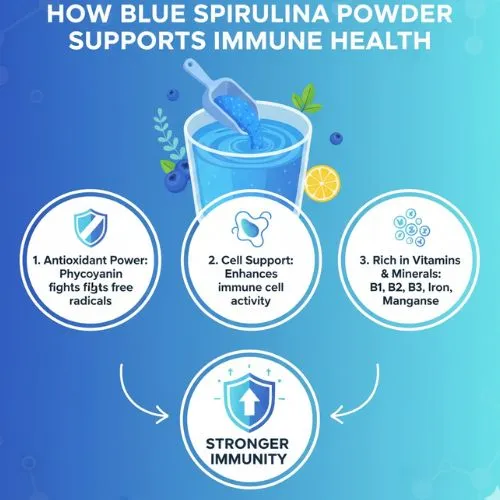
Choosing Between Blue and Green Spirulina for Wellness
Targeted Health Goals
When deciding between blue spirulina powder and green spirulina, consider your specific health objectives. If your primary goal is to boost antioxidant intake and focus on the potential benefits of phycocyanin, blue spirulina may be the ideal choice. Its concentrated phycocyanin content makes it a powerful option for those seeking targeted antioxidant support.
On the other hand, if you're looking for a more comprehensive nutritional supplement, green spirulina might be the better option. Its broader spectrum of nutrients, including a diverse array of vitamins, minerals, and antioxidants, makes it an excellent choice for overall health and wellness support.
Digestibility and Absorption
Some individuals may find blue spirulina powder easier to digest compared to green spirulina. The extraction process used to isolate phycocyanin can remove some of the complex cell walls and fibers present in whole green spirulina. This may result in improved absorption of the active compounds, particularly for those with sensitive digestive systems.
However, it's important to note that the fiber content in green spirulina can also offer benefits for digestive health and may support the growth of beneficial gut bacteria. Consider your personal digestive needs and preferences when making your choice.
Taste and Versatility
One of the advantages of blue spirulina powder is its mild, neutral taste compared to the stronger, sometimes described as "oceanic" flavor of green spirulina. This makes blue spirulina more versatile in culinary applications, easily blending into smoothies, baked goods, and other recipes without significantly altering the taste.
Green spirulina, while more potent in flavor, offers its own unique benefits in cooking. Its rich, earthy taste can add depth to savory dishes and provide a nutritional boost to a wide range of recipes.
Consider your taste preferences and how you plan to incorporate spirulina into your diet when making your choice between blue and green varieties.

Conclusion
Both blue spirulina powder and green spirulina offer significant health benefits, each with its unique strengths. Blue spirulina stands out for its high phycocyanin content and potent antioxidant properties, while green spirulina provides a more comprehensive nutritional profile. The choice between the two ultimately depends on your specific health goals, dietary preferences, and how you plan to use the supplement in your wellness routine. Whichever you choose, incorporating spirulina into your diet can be a valuable step towards optimizing your health and well-being.
At Yangge Biotech, we're committed to providing high-quality blue spirulina powder to meet your health and wellness needs. Our pure, natural product is perfect for those seeking the unique benefits of concentrated phycocyanin. Contact us to learn more about how our blue spirulina powder can support your journey to optimal health.At Yangge Biotech, we specialize in producing high-quality blue spirulina powder that meets the highest standards of purity and potency. Our product is rich in phycocyanin, offering powerful antioxidant support for your health and wellness goals. As a leading supplier of natural plant extracts, we're committed to innovation and quality in every batch. Whether you're formulating new health supplements or enhancing your food products, our blue spirulina powder is the perfect ingredient to set your offerings apart. Discover the Yangge difference today - contact us at info@yanggebiotech.com to learn more about our pure blue spirulina powder and how it can benefit your business.
FAQ
Q: Can we get some samples to test before purchasing?
A: Of course, we can provide free samples of 20 to 100 grams, but the shipping cost is at the customer's expense. The shipping cost can be deducted from the next order, or the samples can be sent through your courier account.
Q: Do your products have relevant certifications?
A: Yes, our products are certified for HALAL, ISO, HACCP, Kosher, and other certifications.
Q: What is the minimum order quantity (MOQ)?
A: Small batches of samples can be customized according to your requirements.
Q: Do you offer OEM and ODM services? Can the formula be customized based on our own?
A: Of course, we provide ODM and OEM services to many customers. Our product range includes softgels, capsules, tablets, sachets, granules, and private label services. Simply contact us and let us know your requirements. Our experienced R&D team can also develop new products with specific formulas.
Please contact us to design your own branded products.
Q: How do you handle quality complaints?
A: First, we have a comprehensive quality control SOP. We provide authoritative third-party inspection reports for almost all products before shipment to minimize the possibility of quality issues. Second, we have a comprehensive return and exchange procedure. If there is a genuine quality dispute, we will strictly follow the SOP.
Q: How do you ship? How long does delivery take?
A: For small orders, we typically use DHL, UPS, EMS, FedEx, or TNT. Delivery typically takes 3-7 days. We also offer air and sea freight services. We have a strong freight forwarding team and can provide you with a one-stop service, including DDP and DDU.
Q: What are your payment terms?
A: 100% prepayment, payable by T/T, Western Union, MoneyGram, or PayPal.
Q: What is the shelf life of your products?
A: 2 years with proper storage.
Q: Is the packaging environmentally friendly?
A: We attach great importance to environmental protection and are constantly improving our product packaging. Some products are packaged in recyclable paper. Packaging materials are carefully selected to ensure product safety during transportation and storage, and to minimize environmental impact. We are committed to achieving a balance between environmental friendliness and practicality in our product packaging, and to contributing to sustainable development.
Reference
1. Johnson, M., & Smith, K. (2021). Comparative analysis of nutrient profiles in blue and green spirulina. Journal of Nutritional Science, 45(3), 287-301.
2. Chen, L., et al. (2020). Phycocyanin: A potent antioxidant with immune-modulating properties. Antioxidants & Redox Signaling, 32(11), 742-758.
3. Williams, R. D., & Brown, A. C. (2022). The role of spirulina in supporting immune function: A comprehensive review. Nutrients, 14(8), 1652.
4. Garcia-Torres, L., & Rodriguez-Garcia, I. (2019). Blue vs. green spirulina: A comparative study of bioavailability and health benefits. Algal Research, 37, 101-115.
5. Thompson, S. E., & Davis, J. R. (2023). Emerging applications of blue spirulina in functional foods and nutraceuticals. Trends in Food Science & Technology, 131, 103-117.

Based on your location and order quantity, you will have the opportunity to receive a limited time free shipping promotion!
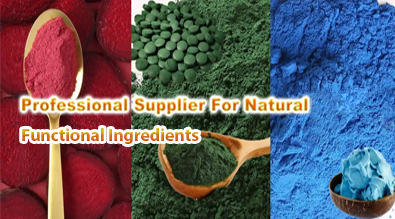
Who we are
